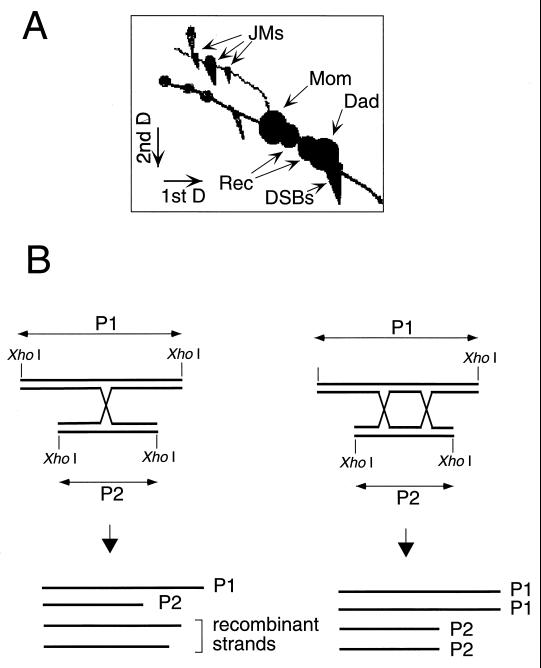FIG. 7.
Physical characterization of the double-HJ intermediate predicted by Szostak et al. (494). (A) Two-dimensional gel electrophoresis of DNA from meiotic cells at the pachytene stage. Restriction enzyme-digested DNA samples are run first slowly on a low-concentration (0.4%) agarose gel. The migration lane is then cut and inserted across a high-concentration (0.8 to 1.0%) agarose gel, for a second, quick migration. Various molecules or events can be identified by Southern blotting, such as parental molecules (Mom and Dad), recombinant molecules (Rec), DSBs, and JMs. There are three different JMs, corresponding to the Mom-Mom, Dad-Dad, and Mom-Dad (the bigger signal in the middle). D, dimension. This figure has been adapted from Fig. 1 of reference 439. (B) JMs are double Holliday junctions. The JMs corresponding to interchromosome recombination (Mom-Dad) can be extracted from the gel. These molecules are resolved into parental and recombinant molecules (437) by the RuvC resolvase, showing that they include HJs. The JMs can also be run on a denaturing electrophoresis gel, and the size and specific hybridization pattern of the strands will indicate if they are recombinant or nonrecombinant strands. The theoretical outcome expected for simple HJs is two parental strands and two recombinant strands (left). This was not observed (437, 438). Instead, only parental strands were observed, the expected outcome for double HJs (right).

